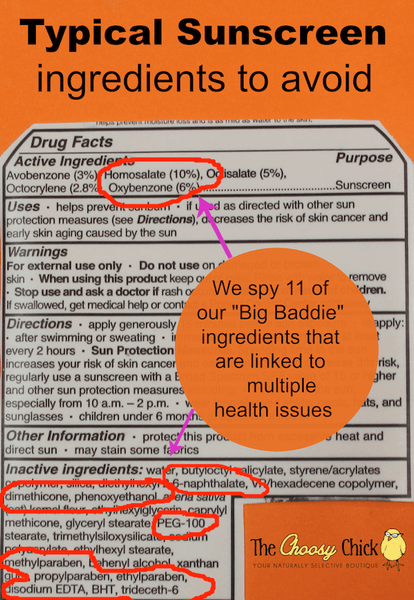

- Chemical sunscreen ingredients how to#
- Chemical sunscreen ingredients skin#
Research has shown that chemical ingredients, particularly oxybenzone, can be detrimental to our ocean’s coral reefs. However, the effects of sunscreen go beyond human health. The American Academy of Dermatology also maintains that you should use sunscreen, including those with chemical filters, as the benefits far outweigh any risks. “These sunscreens have been around a long time with no known toxicity even with these detectable levels,” she says. Skelsey points out that just because it’s in the bloodstream doesn’t mean that it’s dangerous.


Chemical sunscreen ingredients skin#
One point the FDA made was that current research shows oxybenzone, in particular, “is absorbed through the skin to a greater extent than previously understood” and is present in “human breast milk, amniotic fluid, urine, and blood plasma.”
Chemical sunscreen ingredients how to#
How to Spot Different Types of Skin Cancer. Consumers went into panic mode wondering if the products they’ve been using for years could be causing damage to their health. Last year, the FDA made waves with its announcement that it wants to see more data to ensure that chemical sunscreens meet certain safety standards. Is physical sunscreen safer than chemical sunscreen? “But they’re getting better and better in terms of how easy they’re able to be applied and how elegant the formulation is,” notes Dr. Traditionally, physical ingredients have had a thick, chalky consistency that doesn’t blend as well into skin as chemical ingredients. Meanwhile, there are only two physical blockers with FDA approval: zinc oxide and titanium dioxide-these are “generally recognized as safe” by the FDA. There are 12 different active ingredients that the Food and Drug Administration (FDA) allows in chemical sunscreens, the most common including: “That’s why we tell patients to put it on 30 minutes before you’re going to be out in the sun.” Do physical and chemical sunscreens have different ingredients? “Chemical sunscreens work a little differently in that instead of deflecting, they absorb UV radiation and reduce how much penetrates the skin,” she adds, so it takes longer for chemical formulations to start working. Also known as a mineral sunscreen, “physical sunscreen stays on top of the skin like an umbrella and starts working right away to deflect UV rays,” says Maral Skelsey, M.D., a board-certified dermatologist practicing in Maryland and spokesperson for the Skin Cancer Foundation. How do physical and chemical sunscreens work?įirst, it helps to have a little background info about how sunscreens actually do their job. We asked a dermatologist to break down the difference between these formulas and how to choose a sunscreen you’ll actually want to wear every day. In fact, sunscreen can even help reverse signs of damage by fading dark spots, smoothing texture, and boosting skin brightness, according to research in the journal Dermatologic Surgery.īut what kind of sunscreen should you use? The skincare aisle can be overwhelming-especially with buzzwords like “physical” and “chemical” plastered on labels. After all, consistently slathering on the SPF is the best thing you can do to prevent skin cancer and keep your skin looking young and healthy. 
Just like brushing your teeth and washing your face, applying sunscreen should be part of your daily routine.








 0 kommentar(er)
0 kommentar(er)
